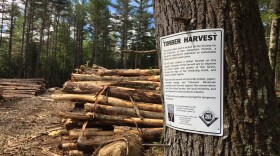We were all duped by media reports this summer that NH had exceeded Maine for the highest percentage of forest cover in the US. Apparently, we're just not "seeing the forest for the trees."
A classic “apples to oranges” comparison reported New Hampshire’s “89% tree cover” now qualifies us as the “most-forested” state in the nation.
FACT #1: A USDA Northern Forest Research and Syracuse University study determined NH tree cover is 89% - and yes, that is higher overall than Maine’s percent tree cover.
FACT #2: Maine has more forest land: Maine is 89% forested compared to NH which remains 85% forested according to the US Forest Service “Forest Inventory and Analysis” program.
That statistical difference is more than semantics. The aerial “tree cover” estimate did NOT consider ecological function. Tree cover alone does not necessarily provide what forests do. Water quality, soils, biological diversity and wildlife habitats of TRUE forest land differs significantly from an understory of single family homes beneath “tree cover” which might also include lawns, picnic tables, golf courses, parking lots and suburban woodland fringes. The FIA definition for forest land is land that is at least 10% stocked by forest trees of any size, or land formerly having such tree cover and not currently developed for a non-forest use. The minimum area for classification as forest land is one acre.
TRUTH IS: We’re still officially 85% forest despite our 89% tree cover. Not the most forested; Maine is … and we’re still number two.








